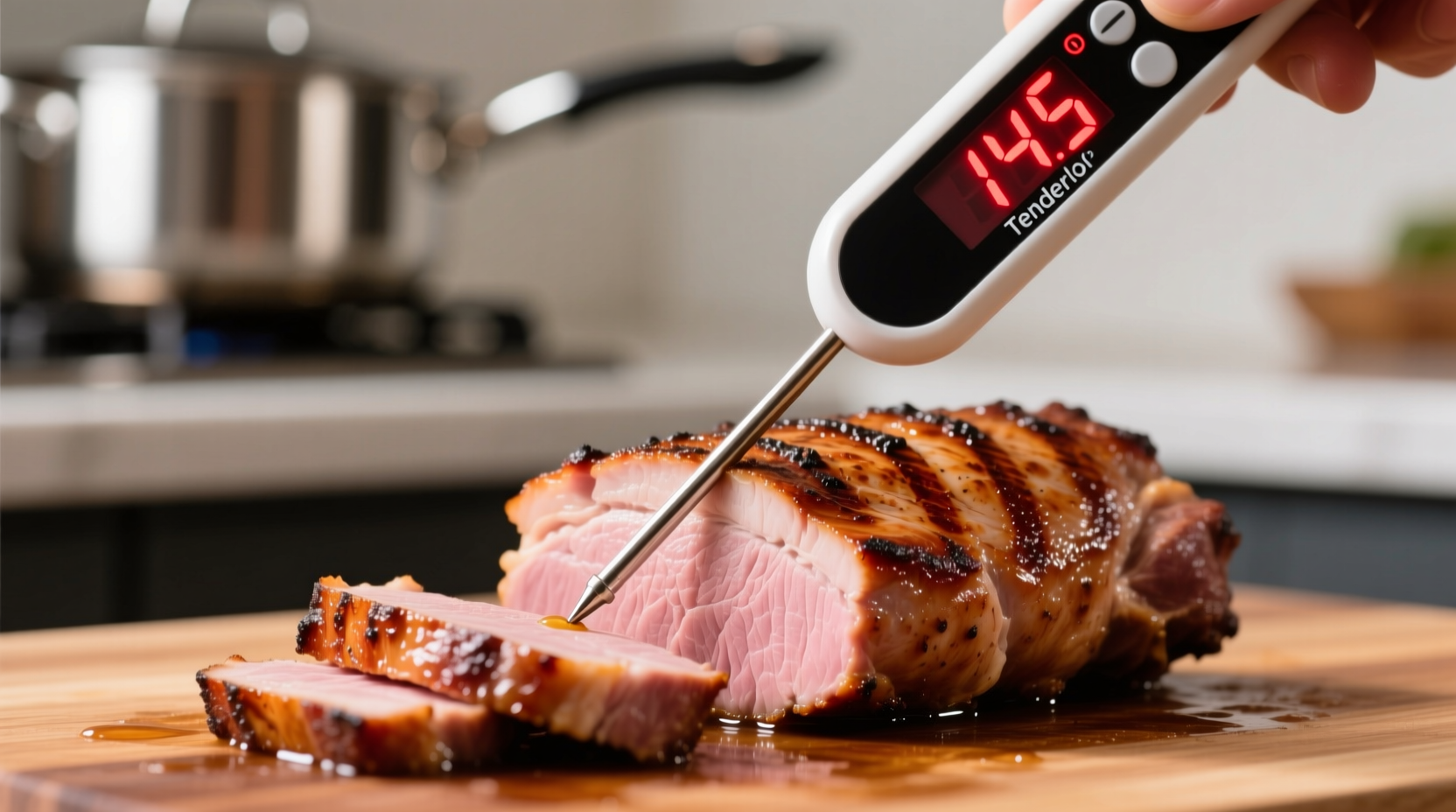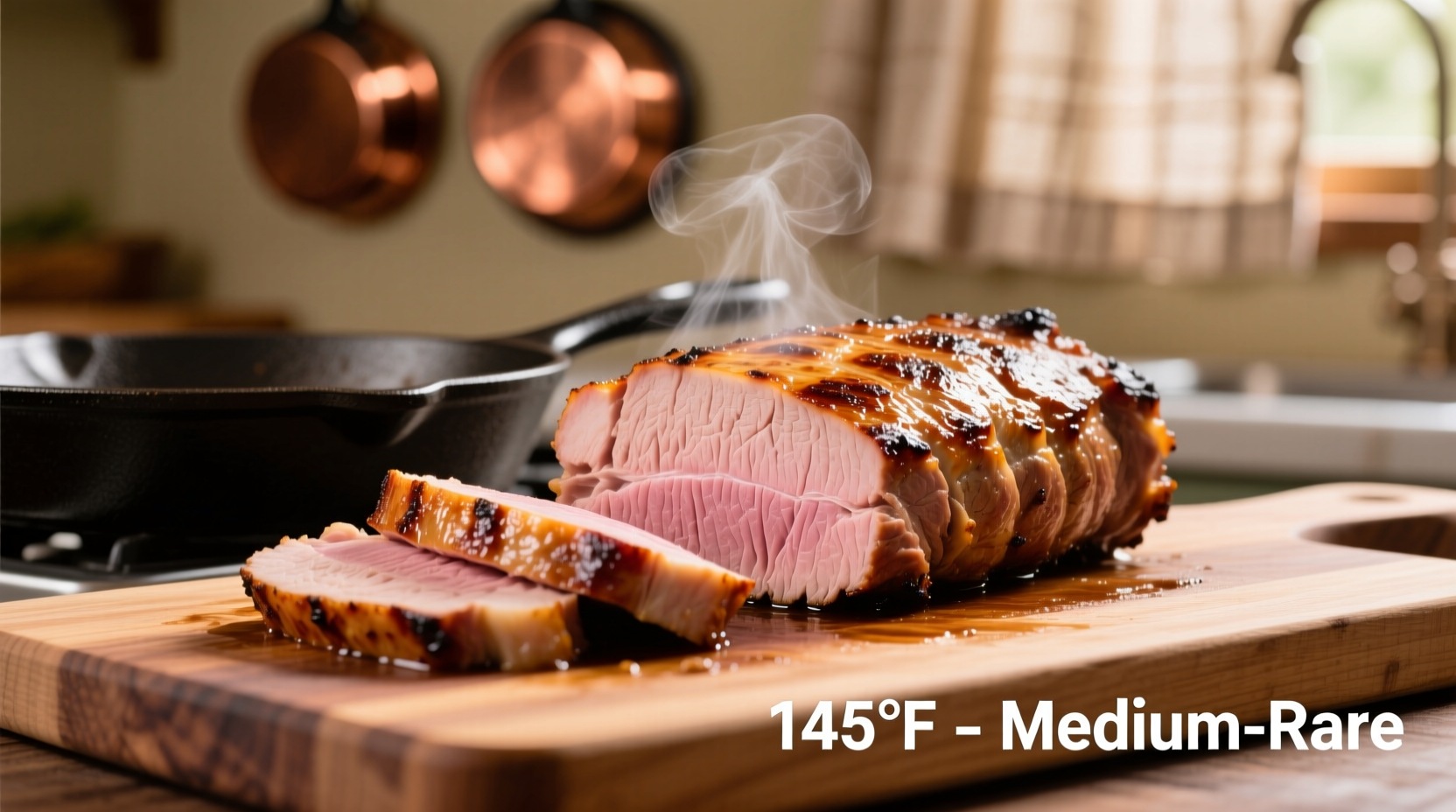Why 145°F Is the Gold Standard for Pork Tenderloin
Understanding the science behind pork cooking temperatures transforms your results from dry disappointments to restaurant-quality perfection. The shift from the old 160°F recommendation to today's 145°F standard wasn't arbitrary—it represents significant advancements in food safety research and meat production practices.
Evolution of Pork Cooking Temperature Guidelines
- Pre-2011: USDA recommended cooking all pork to 160°F due to concerns about trichinosis, resulting in frequently overcooked meat
- May 2011: USDA updated guidelines to 145°F with 3-minute rest based on improved farming practices and parasite reduction
- 2015-Present: FDA Food Code officially adopted 145°F standard, aligning with international food safety organizations
- 2023: Recent studies confirmed no trichinella detected in over 18,000 pork samples tested by USDA
Temperature Effects on Pork Tenderloin Texture
| Internal Temperature | Doneness Level | Texture Characteristics | Moisture Retention |
|---|---|---|---|
| 130-135°F | Rare | Pink center, slightly cool | Excellent (but not USDA safe) |
| 140-145°F | Medium-rare | Uniform pink, warm center | Optimal (USDA safe with rest) |
| 150-155°F | Medium | Faint pink center | Good (beginning to dry) |
| 160°F+ | Well-done | No pink, firm texture | Poor (significantly dry) |
Step-by-Step Cooking Process for Perfect Results
Follow this professional chef-tested method to achieve consistently excellent pork tenderloin every time:
1. Selecting and Preparing Your Meat
Choose pork tenderloin with uniform thickness (about 1-1.5 inches in diameter) and a vibrant pink color. Trim excess fat and silver skin using a sharp boning knife at a 30-degree angle. Pat thoroughly dry with paper towels—this critical step ensures proper searing. Season generously with salt at least 45 minutes before cooking to allow penetration.
2. Choosing Your Cooking Method
While oven roasting remains popular, professional kitchens often use a two-stage approach for optimal results:
- Sear first: Heat 1-2 tablespoons of high-smoke point oil (avocado or grapeseed) in an oven-safe skillet until shimmering. Sear all sides for 2-3 minutes until deeply browned
- Finish in oven: Transfer to preheated 400°F oven until reaching 140°F internally (approximately 10-15 minutes)
- Alternative method: For more precise control, use a sous vide at 138°F for 1-2 hours followed by a quick sear
3. The Critical Resting Phase
Never skip this essential step! After removing from heat, tent loosely with foil and rest for exactly 3 minutes. During this time:
- Temperature will rise 3-5°F to reach the safe 145°F threshold
- Muscle fibers relax, redistributing juices throughout the meat
- Surface moisture reabsorbs, maintaining texture
4. Professional Thermometer Techniques
Accurate temperature measurement makes or breaks your results. Follow these pro tips:
- Use an instant-read digital thermometer (Thermoworks MK4 recommended)
- Insert probe horizontally through the thickest part, avoiding bone or fat pockets
- Take multiple readings in different spots for accuracy
- Calibrate your thermometer monthly using ice water (32°F) or boiling water (212°F)

Avoiding Common Temperature Mistakes
Even experienced cooks fall victim to these temperature pitfalls:
Visual Doneness Myths
Contrary to popular belief, clear juices don't indicate proper doneness. Pork can appear slightly pink at 145°F and still be perfectly safe. Rely solely on thermometer readings, not visual cues.
Resting Time Errors
Resting for less than 3 minutes prevents proper temperature stabilization and juice redistribution. Resting longer than 10 minutes causes excessive heat loss, affecting serving temperature.
Thermometer Placement Issues
Inserting the thermometer too close to the surface gives falsely high readings. The probe must reach the geometric center of the thickest section for accuracy.
Special Considerations for Different Cooking Scenarios
Adjust your approach based on these common variables:
Smoking or Low-Temperature Cooking
When smoking pork tenderloin at 225-250°F, maintain the same 145°F target temperature. The lower heat requires longer cooking time (approximately 1.5 hours) but produces exceptional flavor penetration from wood smoke.
Marinated or Brined Tenderloin
Salt-based brines can slightly lower the required temperature threshold by altering protein structure. However, always verify with a thermometer—never reduce the 145°F standard without scientific verification.
High-Altitude Adjustments
At elevations above 3,000 feet, water boils at lower temperatures, slightly extending cooking times. Increase oven temperature by 25°F and expect 15-20% longer cooking duration while maintaining the same 145°F target.
Food Safety Verification: USDA Guidelines
The U.S. Department of Agriculture's Food Safety and Inspection Service provides clear guidance on pork cooking temperatures. According to their official guidelines, whole muscle pork cuts like tenderloin should be cooked to 145°F with a 3-minute rest period. This standard applies to all fresh pork products except ground pork, which requires 160°F due to increased surface area exposure.
When Precision Matters Most
Certain situations demand extra temperature vigilance:
- For immunocompromised individuals: Some healthcare providers still recommend 150°F for added safety margin
- Commercial food service: Health codes may require documentation of temperature verification
- Competitive cooking: Professional competitions often judge based on precise temperature execution











 浙公网安备
33010002000092号
浙公网安备
33010002000092号 浙B2-20120091-4
浙B2-20120091-4